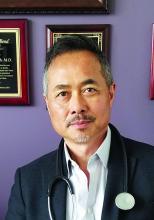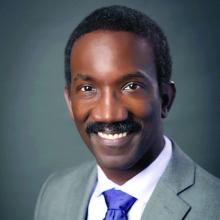After 30 years in a traditional family medicine practice, Jesse Hsieh, MD, was ready for a change.
Data entry and insurance paperwork had drastically reduced his time with patients, and practicing medicine was no longer enjoyable or meaningful, said Dr. Hsieh of Granger, Ind.
“I felt very strongly that we were not delivering the kind of care that could be the best for the patient,” he said. “I explored other ways I could continue to practice the way I wanted; spend time with patients, teach them about things, and not spend so much time with regulatory paperwork and insurance.”
The answer for Dr. Hsieh was direct primary care (DPC), a model that cuts out insurance and centers on unlimited physician access for a flat, membership fee. For $2,500 a year, Dr. Hsieh’s patients can schedule visits as often as they like and communicate with him as the need arises by phone, text, or email.
For Dr. Hsieh, the model allows for a more manageable panel size, ample time to spend with patients, and the ability to make a greater impact on their health.
“I’m practicing the way I did 30 years ago,” Dr. Hsieh said. “I’m spending more time with people, I can call the patient myself about their labs and results and take their questions. I spend a lot more time educating the patient.”
Dr. Hsieh is one of a growing number of physicians moving to direct primary care. In 2009, about 100 practices were providing direct primary care, according to Jay Keese, executive director for the Direct Primary Care Coalition. Today, about 1,000 practices in 48 states provide direct primary care to more than 300,000 patients.
A direct primary care practice can be designed in different ways, but most opt out of insurance and offer a flat fee to patients for all primary care provided, said James A. Ellzy, MD, a family physician in Washington who serves on the American Academy of Family Physicians (AAFP) board of directors. A smaller number of practices operate a hybrid structure that includes both direct patients and fee-for-service patients.
About 3% of AAFP members are currently practicing direct primary care, and another 1% are currently converting, according to the AAFP 2018 Practice Profile Survey.
Nationally, about a third of survey respondents said they were learning about or considering a conversion to direct primary care, while another third said they were unfamiliar with the concept. The AAFP is working to educate physicians about the model, including holding an annual DPC summit.
But the move to direct primary care isn’t a sure bet. Success requires significant preparation, marketing, and structuring, experts say.
“There [can be] challenges in building a practice from scratch after you’ve had a fee-for-service practice,” Mr. Keese said. “If you’ve had a panel size of 2,500 or 3,000, and you’re looking at filling in 600 to 800 patients, it can take some time, which can cause some economic stress. But I think most people who go into direct primary care are excited and never look back.



